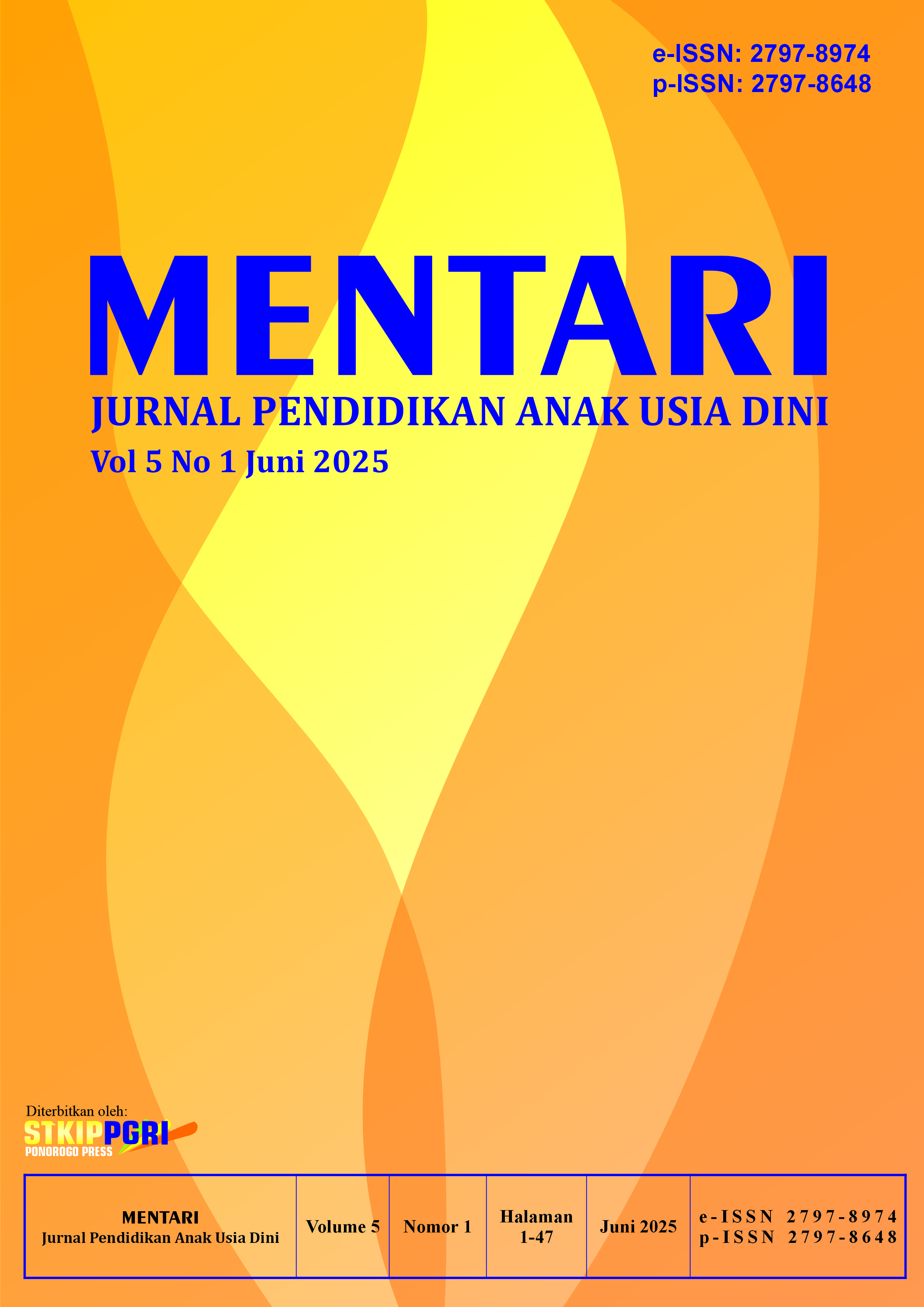Strategi Pembelajaran Anak Usia Dini (AUD) Dengan Gerak Tari
DOI:
https://doi.org/10.60155/mentari.v5i1.640Keywords:
Early Childhood, Dance Movement, Child Development, ECE Learning, Cultural ArtsAbstract
Children naturally enjoy rhythmic and dynamic movement activities, such as dance, that stimulates their cognitive, motor, social, and emotional development. Through an enjoyable approach and direct sensory experiences, dance movement offers opportunities for exploration and concrete learning that align with children>s developmental characteristics. This study employs a descriptive qualitative method based on literature review and field observation to describe dance-based learning strategies in early childhood education (ECE) The findings reveal that learning strategies involving demonstration, the use of childrens music, movement improvisation, integration of learning themes, and the provision of positive reinforcement can enhance childrens engagement and holistic development. In addition to serving as a medium for self-expression and exploration, dance also functions as a tool for cultural preservation and an informal assessment method for teachers. Therefore, it is essential for educators and ECE administrators to integrate dance into the curriculum and provide support through training and the development of creative learning media to optimize the growth and development of children.









